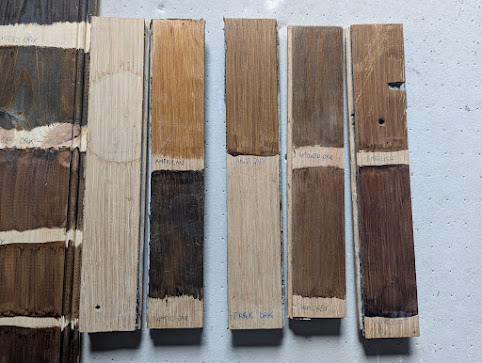 |
| Dolly AI-reimagined at Bonfest ! |
On her second recent stay at the castle, Dolly arrived with the much needed haircut and for the first time I twigged she was probably a Cairn Terrier. I have a soft spot for terriers and love their sparky independence. Ryan and myself bonded much more with Dolly during this stay: we both admitted to being immorally lookist and the haircut was the key. :-) Ryan allowed Dolly much greater freedom this time round as she was a known quantity and allowed her to do her own thing inside and outside the castle, instead of being kept in a room or on a lead. Dolly did not betray this trust, except on one occasion when she decided to eat half a dead rabbit she had found and on another occasion which is the subject of this blog ...
I was sorting out guest rubbish for recycling, pulling out the cans and bottles etc. Occasionally, gems appear such as an unopened packet of crisps. On this occasion, there was a whole unopened pack of butter. When you are banned from driving for a year and in consequence cannot go shopping and live with a vegan chef, a pack of butter is a rarity to be celebrated. I put the butter to one side.
I then discovered a smashed up Victorian pink glass flambeau lampshade which must have been broken by the guests and put into the bin. I ran into the guest accommodation and the table lamp which had been fitted with this shade was missing. I checked the cupboards, and the lamp was nowhere to be found. It had been stolen, to try to hide the crime. I was heartbroken given the trouble I had taken to source this Victorian lamp and shade - both items were irreplaceable. Guest are told they must report and pay for broken items so I felt betrayed as well. I burst into tears and rushed to my neighbour's house to let it all out. After the recent significant and devastating burglary at the castle, any new incident can set me off.
I was too upset to continue sorting out the rubbish, and left it to the next day. The next day was Saturday the 2nd June, and BonFest in Kirriemuir - the annual rock festival celebrating the legacy of Bon Scott (1946-1980) the lead singer of AC/DC who was brought up in the town. Ryan attended the event with Dolly and a human friend. Normally you would expect humans at such festivals to overindulge, but no it was Dolly who was living the rock-and-roll lifestyle.
She vomited in Ryan's bedroom that morning. What emerged was so thick that it hung over the back of Ryan's chair and did not drip to the floor. Dolly vomited (amongst other locations) on the floor of the "The Star Rock Shop", the oldest sweet shop in Scotland let alone Kirriemuir. On coming back to the castle, Dolly vomited on the floor of Gregor's carpentry workshop. Ryan was so fed up with dealing with vomit that day, that he simple sprinkled sawdust over the two deposits. In a carpentry workshop, sawdust is not in short supply...
Later that day I resumed dealing with the waste. There on the ground was an empty pack of butter save a tiny quantity remaining in one corner with little teeth marks in it. I think we all know who the culprit was. :-) My builders mentioned they had seen Dolly in the area of the refuse bonfire pit.
So if the guest had reported their breakage, I would not have been so upset, the pack of butter would not have been left, and Dolly would not have eaten it and then vomited it out onto the mean streets of Kirriemuir. I have never watched the "A Series of Unfortunate Events" franchise, but suspect Dolly's misadventures of excess at a heavy metal festival are right up there.
The good news is that the following day, I did a more careful hunt in the guest accommodation and found that the antique lamp had been stuffed at the very back of a cupboard.
When Dolly arrived at the castle for her latest stay, she did not have a day bed where she could be with Ryan and myself in the kitchen, so we put her on some wool wadding that was used as packaging material. Later on I fabricated a doggie day bed from an Amazon Prime cardboard box, and unholstered with the said wadding.
 |
| Dolly in her Amazon Prime day bed |
You can see from the photo above, that Dolly is not always a heavy metal hooligan or leporine desacrator, and usually serves little dog cuteness. :-)


















